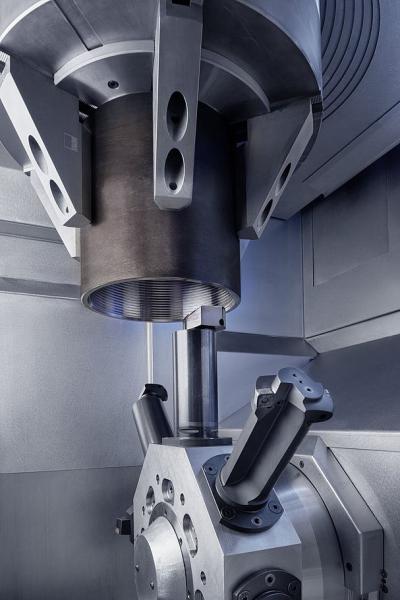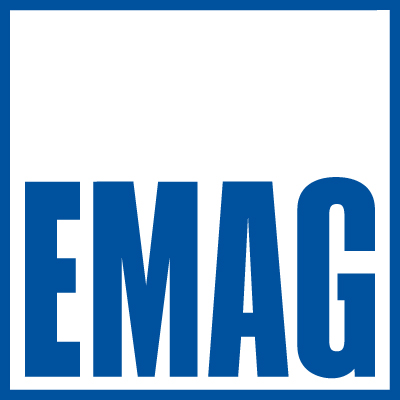
According to the 2018 energy study of the German Federal Institute for Geosciences and Natural Resources (BGR), with a share of 30.5% of the world’s primary energy consumption, oil remains the most important source of energy.
However, global trade restrictions complicate the extraction and importation of this “black gold.” China, for example, is required to extract its own oil in order to meet its domestic demand. China’s hunger for energy pushes the country to drill for oil at record depths – 8,875 m (29,118 ft) below ground, which is lower than Mount Everest is tall.
The continued push to drill deeper set high requirements on the quality and type of premium grade threads found on conveying and ascending pipes, and the corresponding couplings. The need for measuring system is also critical in order to minimize errors.
To meet this demand, EMAG has created a patented system that measures the thread connections of pipes and couplings with no contact, and is performed completely autonomously.
Manually measuring thread and sealing geometries after cutting threads on pipe ends and couplings is a time-consuming and labor-intensive process. However, the measuring process is essential due to the growing requirements on premium threads. Using the patented method developed by EMAG Leipzig, for the first time, the geometries of pipe and coupling threads can now be measured without contact. The contactless optical measuring system does not require any labor and can be used autonomously or integrated into a complete process chain.
The advantages of the TIS are obvious: The potential savings resulting from its unmanned operation alone are tremendous. For example, consider a coupling machine with an annual production capacity of about 1.3 million couplings; savings can stretch beyond 6-figures, and can be achieved quickly.
The new system also ensures constant measurement accuracy with the shortest possible measuring times. Once the measurements are taken, feedback is directed right back to the machine’s CNC control unit, allowing tool corrections to be made automatically and immediately during the machining process.
This error-minimizing system measures all thread types known today (API and premium threads). This allows for the complete elimination of the manual measurement process.
Another advantage provided by this method is the detection of insert wear, allowing optimal insert changes to be performed reducing tool costs. This also avoids undesirable downtimes due to worn tools.
Process Optimization Through Digital Twin
EMAG has been supplying flexible machine concepts and comprehensive systems for the manufacturing of pipe ends, couplings, tool joints and other oilfield components for decades. Complete cells including machines, robots, measuring systems and marking units are all directly supplied by EMAG. By acquiring all of the systems from a single source, EMAG can permanently optimize your process chains – not only for thread cutting, but also upstream and downstream processes.
EMAG uses the most innovative development methods, such as the digital twins, so that the manufacturing process can be simulated and then adjusted.
A machine system that meets all of the demands for the fastidious machining operation involved in the production of couplings has been developed based on this methodology: the VLC 500 CM.
VLC 500 CM Vertical Coupling Machine
With its extremely high range of diameters from 2 3/8“ to 13 3/8“ and a maximum coupling length of 400 mm (16 in), the VLC 500 CM covers an enormous range in coupling production and can be implemented with a large amount of flexibility. The VLC 500 CM also stands out for its high productivity and powerful drives. With its modular structure, the machine can be adapted to perform a variety of machining tasks. The proven pick-up process is used to automatically load and unload the machine, and the dynamic axes further ensure minimal non-productive times.
The Austrian company, voestalpine, already uses the machine. Peter Winkler, Operations Manager of the Threading Departments at voestalpine Tubulars GmbH & Co KG, summarizes “The VLC 500 CM combines exceptional machining performance with precision. This has opened up new opportunities for us in the production of premium OCTG connections.”
Contact Details
Related Glossary Terms
- computer numerical control ( CNC)
computer numerical control ( CNC)
Microprocessor-based controller dedicated to a machine tool that permits the creation or modification of parts. Programmed numerical control activates the machine’s servos and spindle drives and controls the various machining operations. See DNC, direct numerical control; NC, numerical control.
- threading
threading
Process of both external (e.g., thread milling) and internal (e.g., tapping, thread milling) cutting, turning and rolling of threads into particular material. Standardized specifications are available to determine the desired results of the threading process. Numerous thread-series designations are written for specific applications. Threading often is performed on a lathe. Specifications such as thread height are critical in determining the strength of the threads. The material used is taken into consideration in determining the expected results of any particular application for that threaded piece. In external threading, a calculated depth is required as well as a particular angle to the cut. To perform internal threading, the exact diameter to bore the hole is critical before threading. The threads are distinguished from one another by the amount of tolerance and/or allowance that is specified. See turning.

